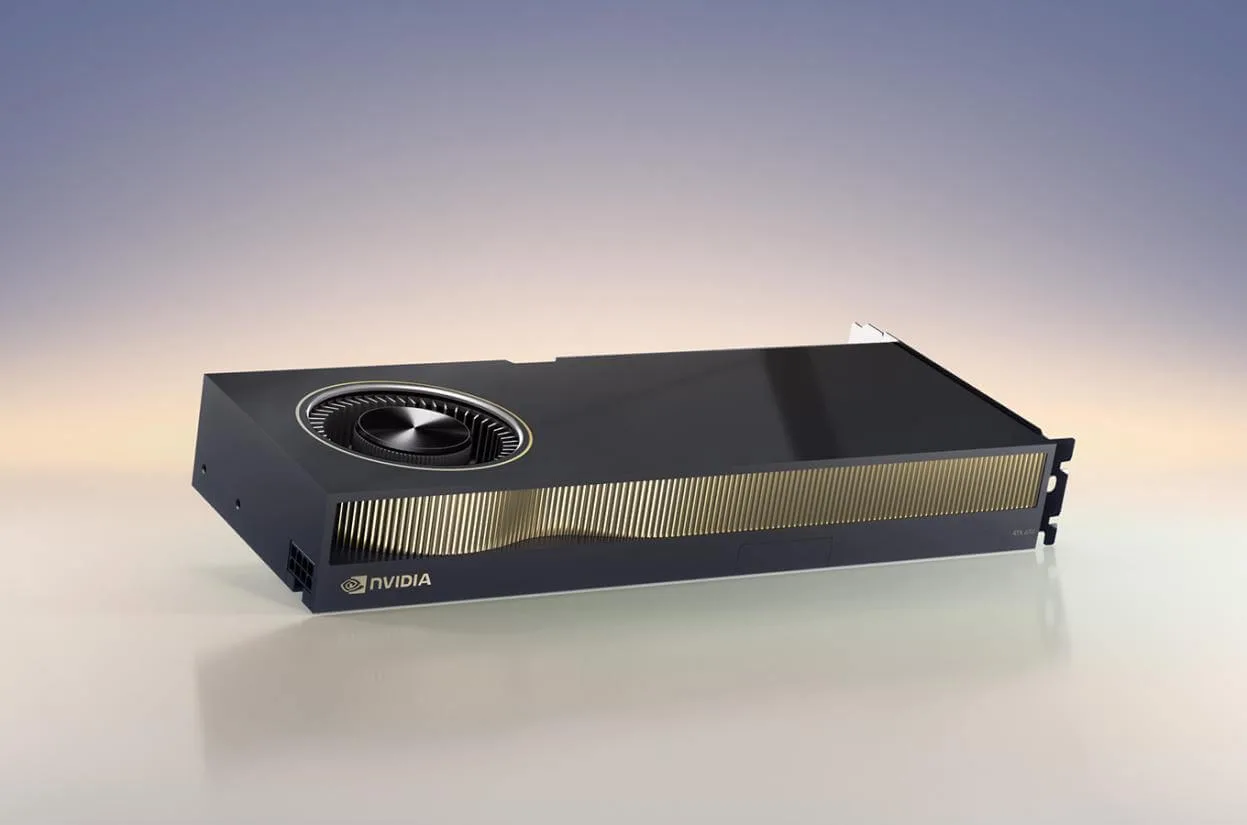The NVIDIA RTX 6000 workstation GPU will be available from global distribution partners and manufacturers starting in December (Q4) and will deliver 2-4x performance improvements in enterprise workflows.
The NVIDIA RTX 6000 workstation GPU is the first to feature the NVIDIA Ada Lovelace neural graphics architecture, which combines AI and simulation. Artists can create more engaging content as a result, as well as build immersive virtual worlds.
Scientists, researchers, and medical professionals can use their workstations for supercomputing to develop life-saving medicines and procedures, which provide up to 2-4x the performance of the previous-generation RTX A6000.
With Ada generation AI and programmable shader technology, the RTX 6000 is the perfect platform for creating content and tools for the metaverse with NVIDIA Omniverse™ Enterprise.
The RTX 6000, which combines the latest generations of rendering, AI, and shader technologies, and 48GB of GPU memory, enables users to create highly-detailed content, develop complicated simulations, and construct the foundation for compelling virtual worlds.
Nvidia’s new GPU the most powerful Lovelace generation card, in terms of processing power with it’s 18,176 CUDA cores as compared with the RTX 4090 which has 16,384.
Despite the RTX 6000’s high power consumption of up to 300 watts, the RTX 4090 has a higher TDP rating of up to 450 watts
Next-Gen RTX Technology
The NVIDIA RTX 6000, driven by the world’s most advanced GPU architecture, the NVIDIA Ada architecture, is the world’s most cutting-edge GPU technology. Here are some of its key features:
- Third-generation RT Cores: 2x the performance of the previous generation, allowing for ray tracing with either shading or denoising capabilities.
- CUDA cores: 2x the single-precision floating point throughput when compared to the previous generation.
- Fourth-generation Tensor Cores: 2x faster AI training performance over the previous generation and expanded support for the FP8 data format.
- GPU memory: Features 48GB of GDDR6 memory for working with the largest 3D models, render images, simulation and AI datasets.
- Virtualization: The ability to support NVIDIA virtual GPU (vGPU) software for multiple high-performance virtual workstation instances and enabling remote users to share resources, AI and compute workloads. and drive high-end design,
- XR: Featuring 3x more video encoding performance over previous generations, for streaming multiple simultaneous XR sessions using NVIDIA CloudXR.

Vice president of professional visualization at NVIDIA, Bob Pette says computer graphics is being driven by neural graphics and will alter the manner in which content is produced and received.
“The NVIDIA RTX 6000 is prepared to assist those working in engineering, design, and scientific fields in meeting the demanding content-creation, rendering, AI, and simulation workloads required to construct the metaverse.” says Petee
Global Leaders Are Turning To NVIDIA RTX 6000
Senior vice president of field operations at Fox Sports, Michael Davies says with NVIDIA’s professional GPUs, we were able to deliver an experience unlike any other to baseball fans across the world by bringing legendary players back to life through AI-powered facial animation
“We’re excited to be able to advantage of the tremendous graphics and AI performance of the RTX 6000 to show the next phase of live sports broadcasts.” Davies said
According to ndrew Cross, CEO of Grass Valley broadcasters are increasingly adopting software and compute helping to build the next generation of TV stations.
“The new workstation GPUs are game-changing, giving us up to 300% performance increases—allowing us to improve the quality of video and the value of our products,” says Cross
Workstation cards like the RTX 6000 also stand to benefit from specialised drivers and longevity, both of which are likely to be critical in scientific computation workloads and creating CGI for the movie industry.
It’s no coincidence that Nvidia mentions pairing Omniverse (its own real-time graphics collaboration platform) with the card, as we move closer to Web 3.0.
According to Nvidia, the RTX 6000 is the ideal tool for creating content for the metaverse, thanks to its Ada Lovelace generation AI, massively increased raytracing, and CUDA cores, as well as programmable shader technology.
Designers and engineers can continue pushing the limits of engineering simulations with the new NVIDIA Ada Lovelace architecture.
The RTX 6000 GPU’s larger L2 cache, increase in the performance of it’s next-gen cores and increased memory bandwidth will result in impressive performance gains for the broad Ansys application portfolio.







